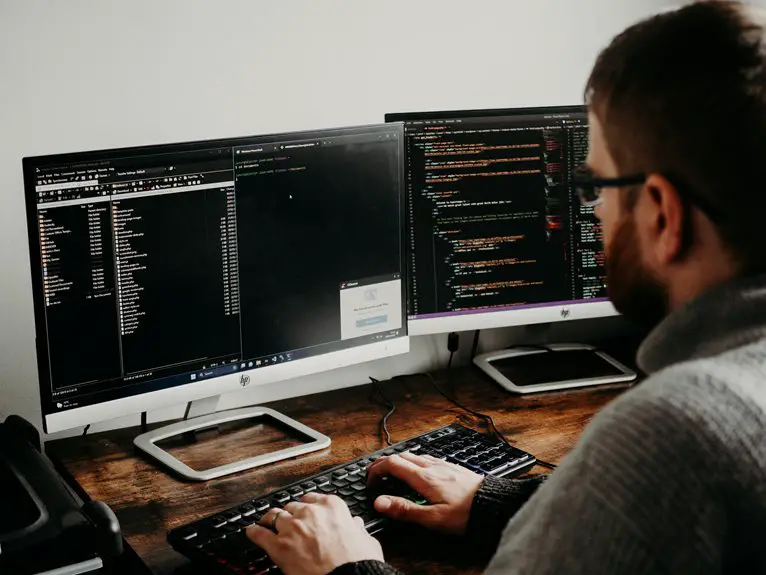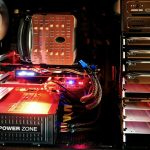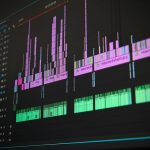Choosing the right desktop for multitasking can significantly impact your productivity. You need to consider various components that contribute to a smooth experience. From the processor's power to the amount of RAM, each element plays a crucial role. Let's explore how to assess your multitasking needs and what features will best support them, ensuring you make an informed decision that suits both your work style and budget.
Table of Contents
Key Takeaways
- Evaluate your regular tasks and applications to determine multitasking needs, prioritizing by frequency and complexity.
- Choose a processor with at least four to six cores to efficiently handle multiple applications simultaneously.
- Opt for a minimum of 8GB of RAM for basic multitasking, upgrading to 16GB or more for demanding tasks.
- Select SSD storage for faster data access and consider combining it with an HDD for additional capacity.
- Invest in a larger monitor or dual monitors to enhance workspace and viewing capabilities for multitasking.
Assessing Your Multitasking Needs
How do you determine what your multitasking needs are? Start by evaluating the tasks you regularly perform.
Are you juggling multiple applications at once, like video editing software, web browsers, and office programs? List the tasks that require your attention and prioritize them based on frequency and complexity.
Think about how many applications you typically run simultaneously—this will guide your requirements for RAM and processing power.
Consider your work environment as well; do you need multiple monitors for better visibility?
Finally, reflect on your budget and how it aligns with your multitasking demands.
Understanding Processor Power
When you're multitasking, the power of your processor plays a crucial role in keeping everything running smoothly.
You'll want to pay attention to core count and clock speed, as these factors directly impact performance.
Understanding these elements will help you choose the right desktop for your needs.
Core Count Importance
In today's fast-paced digital environment, a processor's core count plays a crucial role in multitasking efficiency. More cores mean your desktop can handle multiple tasks simultaneously without slowing down.
When you're running resource-intensive applications like video editing software or virtual machines, having a higher core count allows your system to distribute workloads effectively. This means you can edit videos while browsing the web or streaming music without lag.
If you often juggle various programs, aim for at least four to six cores for optimal performance. Remember, it's not just about having a fast processor; it's about how many tasks it can manage at once.
Choosing a desktop with the right core count can significantly enhance your multitasking experience.
Clock Speed Considerations
Clock speed is another critical factor to consider when evaluating a processor's performance for multitasking. It refers to how fast a CPU can execute instructions, typically measured in gigahertz (GHz). A higher clock speed means your desktop can handle more operations per second, which is essential when running multiple applications simultaneously.
| Clock Speed (GHz) | Performance Level |
|---|---|
| 2.0 GHz | Basic multitasking |
| 3.5 GHz | Efficient multitasking |
| 4.0 GHz | High-performance multitasking |
When you're juggling tasks like video editing, web browsing, and gaming, a higher clock speed ensures smooth transitions and responsiveness. So, be sure to factor this into your decision-making process for optimal multitasking capabilities.
Importance of RAM for Multitasking
RAM acts as the backbone of your multitasking experience, allowing your desktop to run multiple applications smoothly. When you open several programs—be it a web browser, a word processor, or design software—your RAM holds the necessary data for quick access.
If you don't have enough RAM, you'll notice lagging or freezing, which can disrupt your workflow. Aim for at least 8GB of RAM for basic multitasking, but consider 16GB or more for demanding tasks like video editing or gaming.
More RAM means better performance, enabling you to switch between applications seamlessly. In short, investing in sufficient RAM can dramatically enhance your productivity and make your multitasking efforts far more efficient.
Choosing the Right Storage Options
When multitasking, having the right storage options is just as important as sufficient RAM.
You'll want to consider both speed and capacity to ensure smooth performance. Solid State Drives (SSDs) are your best bet for quick data access and boot times, making them ideal for running multiple applications simultaneously.
If you store large files or run resource-heavy programs, consider combining an SSD with a larger Hard Disk Drive (HDD) for additional space. This setup lets you keep frequently used files on the SSD while archiving others on the HDD.
Remember, faster storage means less lag, allowing you to switch between tasks seamlessly.
Evaluate your storage needs carefully to create an efficient multitasking environment.
Display Size and Resolution Considerations
When you're multitasking, the size and resolution of your display can make a big difference.
A larger screen gives you more room to work with multiple windows, while high resolution ensures everything looks sharp and clear.
Let's explore how these factors can enhance your productivity.
Optimal Screen Real Estate
Screen real estate plays a crucial role in enhancing your multitasking capabilities. When choosing a desktop, consider a larger display size to give you ample workspace for multiple applications. A 27-inch monitor or larger can significantly improve your efficiency, allowing you to view documents side by side or keep communication apps open while working on projects.
You should also think about the aspect ratio. A 16:9 ratio is standard, but ultrawide monitors offer even more horizontal space, making it easier to juggle tasks.
Don't overlook the benefits of dual monitors either; they can double your screen real estate. Ultimately, the right screen size and setup will help streamline your workflow and elevate your productivity.
Importance of High Resolution
While you might be tempted to prioritize size over quality, high resolution is just as essential for a productive multitasking environment. A display with a higher resolution means sharper images and clearer text, making it easier for you to read and interact with multiple applications at once.
With crisp visuals, you can quickly switch between tasks without straining your eyes or losing focus.
Consider choosing a monitor with at least 1080p (Full HD) resolution, but if your budget allows, aim for 1440p or 4K for even better clarity.
High resolution also enhances your ability to work with detailed graphics or data-heavy applications, ensuring you don't miss crucial information. In multitasking, clarity and precision should always go hand in hand.
Ergonomics and Workspace Setup
To ensure you can multitask effectively, setting up your workspace with ergonomics in mind is crucial. A comfortable and well-organized environment boosts productivity and reduces strain.
Here are some key elements to consider:
- Chair Height: Adjust your chair so your feet rest flat on the floor, keeping your knees at a 90-degree angle.
- Monitor Position: Place your monitor at eye level to prevent neck strain and ensure easy viewing.
- Keyboard and Mouse: Keep your keyboard and mouse close enough to avoid reaching too far, which can lead to discomfort.
- Lighting: Ensure adequate lighting to reduce glare on your screen and minimize eye strain.
Frequently Asked Questions
What Budget Should I Set for a Multitasking Desktop?
You should aim for a budget between $800 and $1500 for a multitasking desktop. This range ensures you get a powerful processor, ample RAM, and a decent graphics card to handle multiple tasks efficiently.
Are Gaming Desktops Suitable for Multitasking?
Yes, gaming desktops are suitable for multitasking. They typically feature powerful processors, ample RAM, and high-performance graphics, allowing you to run multiple applications smoothly. Just ensure you choose one with the right specifications for your needs.
How Often Should I Upgrade My Desktop for Multitasking?
You should consider upgrading your desktop every three to five years. This timeframe helps ensure you're equipped with the latest technology, keeping your multitasking smooth and efficient without lagging behind in performance.
Can I Use a Laptop for Multitasking Instead of a Desktop?
Yes, you can use a laptop for multitasking. Just ensure it has enough RAM and a powerful processor. Many modern laptops handle multiple applications well, but desktops often offer better performance for intensive tasks.
What Brand Is Best for Multitasking Desktops?
When it comes to multitasking desktops, brands like Dell, HP, and Lenovo stand out. They offer powerful processors and ample RAM, ensuring you can efficiently run multiple applications without experiencing lag or slowdowns.




